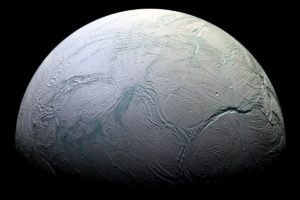by WorldTribune Staff, November 16, 2017
Within the next 20 years, life will be found somewhere amid the 3,500 exoplanets that have been discovered, a NASA researcher said.
“I think that in 20 years we will have found one candidate that might be it,” said Tony del Genio of NASA’s Goddard Institute for Space Studies.

Scientists recently discovered a planet the same size of Earth and with a similar surface temperature which they say may be “the closest known comfortable abode for possible life.” The newly discovered world, named Ross 128b, was found orbiting a red dwarf star 11 light-years away from Earth.
Scientists are being guided by the characteristics of Earth to help weed out inhospitable worlds from those that may have promise for life, such as the icy moons Enceladus and Europa, del Genio said.
“Before we go looking for life, we’re trying to figure out what kinds of planets could have a climate that’s conducive to life,” he said.
From what’s known about life on Earth, water is key.
“Everywhere we look, whether it’s a desert or Antarctica or the deepest parts of the ocean or the deepest parts of Earth’s crust that we’ve explored, as long as there’s a tiny speck of liquid water, there’s life,” NASA explains in a new video, How to Find a Living Planet.
“And because of that, it’s been central to NASA’s search for habitable environments elsewhere.”
The detection of water completely changed scientists’ opinions on the two icy moons, explains research scientist Morgan Cable of NASA’s Jet Propulsion Laboratory in Pasadena, California.
“We thought Enceladus was just boring and cold until the Cassini mission discovered a liquid water subsurface ocean,” said Cable.
When studying a potential habitable planet, “life has to be the hypothesis of last resort,” Cable said. “You must eliminate all other explanations.”
Researchers are also looking for environments that contain both oxygen and methane, NASA said, adding that when those two gases are found in the same atmosphere, “you’ve got something special.”
“There are ways to build up oxygen and methane in a planetary atmosphere, but the only way you could have both in the same atmosphere at the same time is if you produce them both super rapidly,” said Shawn Domagal-Goldman, of NASA’s Goddard Space Flight Center.
Subscribe to Geostrategy-Direct __________ Support Free Press Foundation
